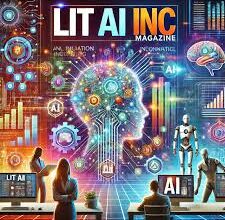Cloud Computing Essentials Lumolog: Unlocking the Future of Technology
Mastering the Core of Cloud Computing for Business Growth and Innovation

Cloud computing essentials lumolog encapsulates the critical knowledge every business needs to harness the power of cloud technology. By integrating scalable, cost-effective, and efficient solutions, organizations can revolutionize their operations, enabling innovation and agility in a competitive market. Understanding and implementing these essentials is the first step toward a successful digital transformation.
Introduction to Cloud Computing Essentials
Cloud computing is the on-demand delivery of computing resources over the internet. It eliminates the need for physical hardware by providing scalable and flexible solutions tailored to individual business needs. Lumolog, a thought leader in this domain, emphasizes understanding the core principles of cloud computing to leverage its full potential. Whether it’s data storage, application hosting, or resource optimization, cloud computing has become a cornerstone of modern business infrastructure.
The Key Benefits of Cloud Computing
Cloud computing offers numerous advantages that redefine operational efficiency and scalability. Some of the most notable benefits include:
Cost Savings
By adopting a pay-as-you-go model, businesses significantly reduce capital expenditure on hardware and software.
Scalability
Cloud services allow seamless scaling of resources to meet fluctuating demands without over-provisioning.
Accessibility
With data and applications hosted in the cloud, remote work becomes more efficient and secure.
Innovation
Access to advanced tools and platforms fosters creativity and accelerates digital transformation efforts.
Enhanced Security
Leading cloud providers prioritize robust security measures, ensuring data protection and compliance.
Exploring Cloud Service Models
To fully understand cloud computing essentials, it’s vital to explore the three primary service models:
- Infrastructure as a Service (IaaS): Provides virtualized computing resources like servers, storage, and networking.
- Platform as a Service (PaaS): Offers a platform for developing, testing, and deploying applications without worrying about underlying infrastructure.
- Software as a Service (SaaS): Delivers applications over the internet, eliminating the need for installation or maintenance.
Each model caters to specific business requirements, making it essential to identify which aligns best with organizational goals.
Essential Features of Cloud Computing
Cloud computing is defined by its unique features, which include:
- On-Demand Self-Service: Users can provision resources as needed without requiring human intervention.
- Broad Network Access: Services are accessible through standard devices like laptops and smartphones.
- Resource Pooling: Providers serve multiple clients using shared resources, optimizing efficiency.
- Rapid Elasticity: Resources can be scaled up or down quickly based on demand.
- Measured Service: Usage is monitored, controlled, and reported to ensure transparency.
Choosing the Right Cloud Service Provider
Selecting a cloud service provider is a critical decision that impacts business operations. Consider the following factors:
- Reliability: Ensure the provider guarantees high uptime and dependable services.
- Security Measures: Look for robust encryption, data protection, and compliance standards.
- Scalability Options: The provider should offer flexible plans to accommodate growth.
- Support Services: Round-the-clock support ensures minimal downtime and quick issue resolution.
- Cost Transparency: Understand the pricing structure to avoid hidden charges.
Challenges and Solutions in Cloud Computing
While cloud computing offers immense benefits, challenges persist. Common issues include:
- Data Security Concerns: Addressed by implementing encryption, firewalls, and regular audits.
- Downtime Risks: Mitigated through multi-region backups and robust disaster recovery plans.
- Integration Complexities: Simplified by thorough planning and leveraging APIs for seamless connectivity.
- Compliance Issues: Ensured by adhering to industry-specific regulations and standards.
Future Trends in Cloud Technology
The future of cloud computing is bright, with emerging trends reshaping the technology landscape:
- Edge Computing: Processing data closer to its source for faster and more efficient operations.
- AI and Machine Learning Integration: Leveraging AI for predictive analytics and smarter decision-making.
- Hybrid Cloud Solutions: Combining public and private clouds for greater flexibility.
- Serverless Computing: Enabling developers to focus solely on code without managing infrastructure.
- Sustainability Initiatives: Green cloud solutions aim to reduce energy consumption and carbon footprint.
Conclusion
Cloud computing essentials lumolog highlights the transformative potential of adopting cloud solutions. From cost efficiency to scalability, the benefits are undeniable. By understanding its foundational elements, businesses can navigate challenges, unlock innovation, and stay ahead in the digital age. The future belongs to those who harness the power of the cloud to drive growth and success.



